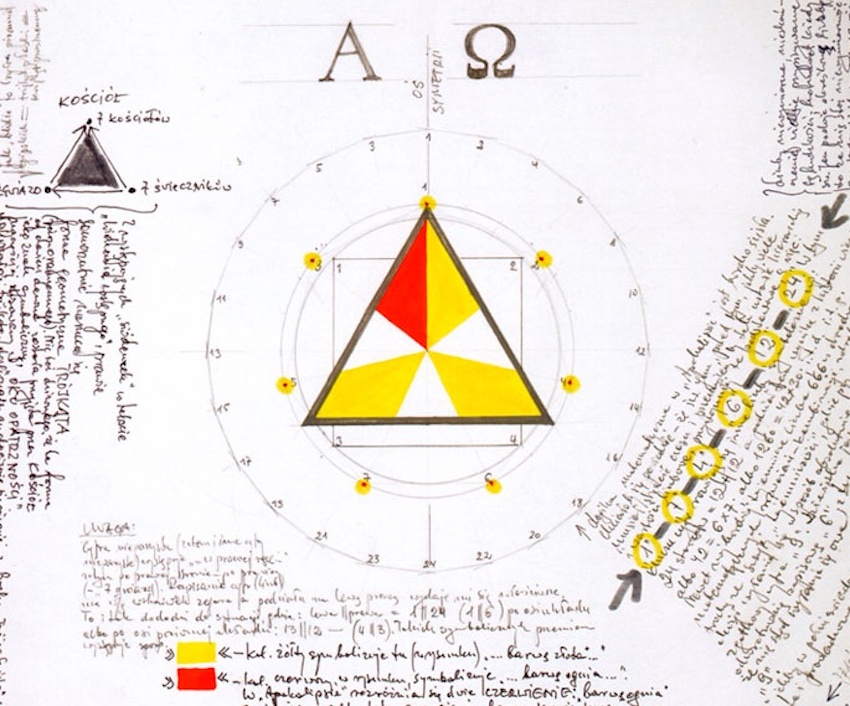One day a teacher set a problem for the class that he thought would keep them busy for at least an hour. But a student solved the problem in about a minute. How he solved the problem is a reminder of how maths should be taught.
The story goes that in the 1780’s a provincial German teacher wanted to keep his class busy for a while. So he set them the problem of adding up the first 100 numbers i.e. \(1 + 2 + 3 + 4 + 5 ... 100\). After about a minute, Carl Friedrich Gauss, walked to the front of the class with the number \(5055\) written on a piece of paper. The teacher thought he had cheated but didn’t know how. There appears to be no record of how Gauss solved the problem therefore the story has taken on mythical proportions and speculation has been rife as to how the young Gauss solved the problem. Although he had the ability to carryout complicated calculations, something that he had from the age of 3, I suspect that he used his ability to look at maths problems in a different way.
To see how he could of solved the problem so quickly let’s look at a simpler problem: adding the first \(5\) numbers i.e. \(1 + 2 + 3 + 4 + 5\). Rather than using a pen and paper and adding up first \(1 + 2 = 3\) then adding \(3 + 4 = 7\) and so on let’s lay the numbers in a the following pattern:
\[\begin{array}{c c c c c} \bullet & \bullet & \bullet & \bullet & \bullet \\ \hspace{1 mm} & \bullet & \bullet & \bullet & \bullet \\ \hspace{1 mm} & \hspace{1 mm} & \bullet & \bullet & \bullet\\ \hspace{1 mm} & \hspace{1 mm} & \hspace{1 mm} & \bullet & \bullet\\ \hspace{1 mm} & \hspace{1 mm} & \hspace{1 mm} & \hspace{1 mm} & \bullet\\ \hline 1 & 2 & 3 & 4 & 5 \end{array}\]What Gauss probably spotted was that if he added the last number to the first and the second last number to the second one etc. the columns always add up to the same number:
\[\begin{array}{c c c c c} \bullet & \bullet & \bullet & \bullet & \bullet \\ \circ & \bullet & \bullet & \bullet & \bullet \\ \circ & \circ & \bullet & \bullet & \bullet\\ \circ & \circ & \circ & \bullet & \bullet\\ \circ & \circ & \circ & \circ & \bullet\\ \circ & \circ & \circ & \circ & \circ\\ \hline 6 & 6 & 6 & 6 & 6 \end{array}\]Now the picture shows \(6\) rows by \(5\) columns which gives a total number of dots of \(30\). But only half the dots were the original numbers therefore dividing \(30\) by \(2\) gives the correct answer of \(15\). Of course it would need a very large piece of paper and a long time to draw out the dots but what Gauss probably saw was a pattern for the solution. Gauss’ insight can be generalised for the total sum of any number \(N\), i.e. \((N+1) \times (N) \div{2}\). In the case of the number set by the teacher then we have \((100 + 1) \times 100 \div 2\) which gives the answer \(5055\). Gauss took problem that used addition and solved it by turning it into a multiplication problem which is quicker to calculate.
Maths has to fit into a busy school curriculum. To get through a wide and varied syllabus the teaching of maths can be reduced to rote learning: this is the problem now apply this formulae to get the solution. If a bit more time was allowed for students to play with the problems and explore different ideas then they would gain a deeper understanding of the subject and might even have fun!
Gauss turned out to be one of the greatest mathematicians of the 18th century whose influence is still felt today with many of his ideas used in the current maths syllabus. During his career he never lost the approach of looking at problems in a different ways which often led to breakthroughs in maths. Few students will turn out to be like Gauss but allowing them time to explore maths in a playful way would increase the much needed levels of numeracy.
